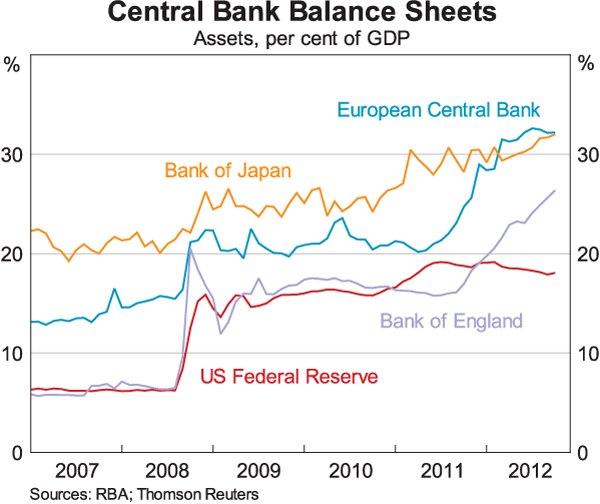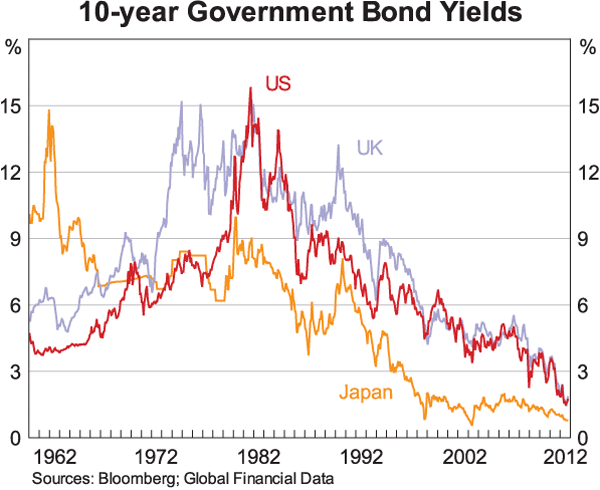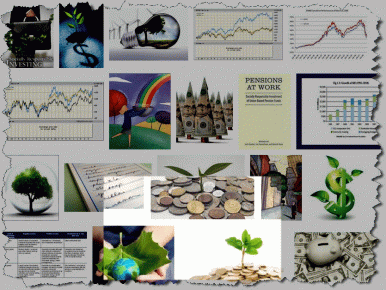What are the major investment themes confronting investors today? What are the likely to be tomorrow or in 5, 10 or 15 years time?
Michael’s View
As regular readers know, this site does not usually make predictions.
There is a reason for that – the future is a complete unknown, and anyone who attempts to paint the picture of how things will look in 10 years time is highly likely to be completely wrong.
What you can do though, is to look at what are the issues we all face today, and consider how the resolution of these issues is likely to impact on the range of future potential outcomes for your projections?
Major Investment Themes
Here is my listing of the key issues facing the investment market in Australia today… You may look at it and wonder how it could possibly be a financial outlook, given the bulk of issues are not overtly financial? My reasoning is that these are the issues operating beneach the surface, on which people will make assumptions that underpin their projections into the future. In other words, i am starting with the completely unpredictable issues that have the capacity to radically turn on their head every basic financial assumption behind financial projections into the future. Here’s my list:
- Population change. Both its direction (up or down) and its rate of change. This is the biggie. It is already creating issues throughout the world as lower population growth in developed countries stymies growth while increasing the burden on the reducing number of future workers. Pensions will be the most obvious bursting point for this pressure. Local property prices (as opposed to national averages) will be a close second. How about demographics? Will the gravitation towards urban areas just expand further and further? The range of global population outcomes for 50 years from now is huge. Anything from massive increases to large decreases. Either will have an incredibly impact on money, life and living.
- Global conflict. More or less? Where is it likely to occur? Will “wars” remain smaller engagements, fought in third-world countries and “terrorist” locations? Will the global push by separatists grow stronger or weaker? For example, calls for succession by people in Spain or Italy or Germany are more vehement than ever. Will internal unrest exceed international unrest? Will the nuclear sleeper be awakened when Iran, North Korea or anyone else gain greater nuclear power? Will China reverse centuries of introvert activity and burst onto the global scene as an expansionary power? Will growing populations fight for ever more scarce resources?
- Energy. Iraq has the potential to be a key global energy supplier. Coal seam gas and “fracking” are changing the reigns of power – potentially shifting them away from the Middle East. Massive investment in alternative energies may trigger a game-changing technical innovation (although methinks that is more likely to be in energy storage and transmission than generation).
- Water. Arguably, all other issues flow from population change but regardless of that change, it is likely that water resources and water security will be a major issue. Any major issue eventually becomes a financial issue, so it will be interesting to see where this goes.
- Food. 40% spikes in soft grain prices can have horrific impacts on already impoverished countries. i have seen strong presentations arguing for the next global fight to be over protein, and the limited capacity of existing agricultural production to cater for dramatically increased demand for protein, as hundreds of millions of people come in to the wealth that allows them to compete for more desirable food sources. Australia is already experiencing debate on foreign investment into the national agricultural assets. It’s a no brainer that one though. Australia as a country is too short-sighted to see value in a volatile market with limited short-term earning potential. Ooops. That was opinionated… While on food, let’s hope the current decimation of global food export figures doesn’t result in too much scarcity and deprivation around the world – Australian export crop down 30%, Argentina down 16%, former Soviet Union (eg Ukraine) down 48%. It’s only the 6% increase in rice stockpiles that is fighting off a disaster so far.
- Climate variation. This is the great coffee-shop debating topic of today. Frankly, i’m disinterested in whether there are valid arguments for humanity impacting on weather patterns. The issue here is changing weather patterns impacting on humanity. Sea levels appear to be rising – that’ll have an impact. Storms, rainfall changes and the like change eternally, as would be expected of a completely variable system but the impact on agricultural output and major population centres can be economically devastating. It’s like a great unknown catalyst for random change.
- Generational change. The baby boomers are an energetic, selfish, spendthrift, family oriented and worried about keeping the wealth and entitlements they have accumulated over their working life. It’s unlikely that overall social prosperity and growth can be maintained if all that wealth and those entitlements remain in the hands of those approaching their later years. At least, while maintaining social cohesion. Refer back to conflict.
- Wealth distribution. At the moment, the “wealthy” developed countries collectively owe money to the underdeveloped countries. There are massive imbalances around the globe in all asset classes from currency to debt markets to equity markets. This is the area where discussion tends to centre, so we’ll leave Michael’s list now and move on to the more accepted version of key issues.
That’s quite a list, and i certainly do not intend to bore you with an extrapolation of every possible outcome for each issue. i’ll put you to sleep gradually, and treat these separately over time… There are other potential contenders for inclusion in this list, such as environmental and socially responsible investing (just look at the flack the Future Fund is copping for its tobacco industry exposure), heathcare and aged care issues and others. They are far more specific though, and tend towards portfolio allocation rather than broad portfolio projection impacts.
For now, i’m going to point to a brilliant dissertation provided by Philip Lowe – Deputy Governor of the Reserve Bank of Australia (RBA). His full address can be found here “Australia and the World” – address to Commonwealth Bank Australasian Fixed Income Conference Dinner 30 October 2012.
In this note, the Deputy Governor points to the larger issues impacting economic thinking in Australia at the moment. We’ll cover some of it in later posts but for now i’ll simply highlight some fascinating key points. The first is one that Philip Lowe touches on but i will take it a step further, and declare…
Central Banks making up for deficient governments
Argue against this one if you dare.
Governments around the world are inefficient and ineffective in delivering outcomes that balance the competing needs within nations. Just look at the pathetic results of the EU in ignoring every individual country referendum outcome, and forcing through poorly thought through EU objectives, while being completely unprepared to take the steps required to ensure success. And the woefully inadequate efforts of US legislators to take advantage of the greatest economy on earth, ever. And the Japanese rabbit-in-the-headlights approach to decades of deflation. And Australia’s inability to expand productivity and obtain genuine advantage from the biggest investment phase in 100 years. Politics just ain’t cutting the custard right now.
So central bankers are having to do what they can, with the limited resources at their disposal.
Ben Bernanke has thrown trillions of dollars at the US banking system to try to get someone, somewhere to hire someone and for that person to then decide to go out and borrow money to buy a house. It didn’t work, so he’s now stuck his thumb up at the world and said he’ll just print money until someone, somewhere does their job and takes away the need for him to keep doing so.
Bank of Japan Governor Masaaki Shirakawa is buying up bad debts, and printing money hand over fist. Bloomberg.com tells us “The central bank expanded its asset-purchase fund, its main policy tool, by 11 trillion yen to 66 trillion yen, it said in the release. It added to monetary stimulus for the second time in two months, the fastest pace of easing in nearly a decade, as government data this month showed that consumer prices and industrial output decreased”. That’s a huge flow of money printing.
European Central Bank President Mario Draghi has embarked on a promised unending splurge of bond buying/ money printing or call-it-what-you-may. He’s basically going to buy the debts of Euro countries that are failing to find buyers in “normal” markets. Count his money splash in trillions.
Bank of England’s George Osborne has pumped out £365,700,000,000 to keep the UK in the race.
My argument is that central bankers are having to take these measures because the respective governments have failed to tackle their respective national economic issues. The end result is the same as the debacle post the Great Depression when a trade war triggered protectionism and economic stagnation. It’s just being fought on a different playing field today.
There is a trade war being going on, and its being fought out in currency and interest rate markets. China started its war years ago, by pegging its currency to the $US – taking away the ability of the US to tackle its reducing trade competitiveness through dollar devaluation.
Here is the chart provided by RBA Deputy Governor Philip Lowe..
That’s a lot of money printing, isn’t it? As Deputy Governor Lowe points out, this skews interest rates and currency rates throughout the world. In Australia’s case, it leverages the currency rise from increased commodity income and investment flow. It distorts (massively) the yield obtained on long term bonds and debt.
Are Balanced Funds still Balanced?
Balanced funds generally have 50-70% of their money in equity (shares, property and the like) with the balance in debt (bonds, fixed interest, cash and the like). There are other assets but the mix between these two determines the bulk of the investment return outcome that the particular fund will ever achieve.
We’ve looked at shares and property quite a bit but here’s the RBA chart on the yields (ie, the interest income divided by the price of the government bond) of various government bonds. When looking at this chart, try to remember that lower yields generally translates into higher bond prices. In other words, bond prices are to be considered quite expensive right now – which is logical as it is governments who are out there bidding for the bulk of their own debt!
And the circular reference from this is that it requires companies and governments to pump more money into pensions and welfare systems as the actuarial calculations are mostly based on the government “risk free” bond rate. Ooops. Fiscal slip-up. Here’s a UK corporate fellow pointing out just how big the problem becomes.
This issue also faces every super fund member. Bonds (debt) have shown greater returns than equity (shares) but the ability to continue to do so is most likely now completely in the hands of the 4 Central Bank leaders. Scary thought.
Let’s say it again for emphasis… the outcome of the biggest asset allocation decision that super fund trustees of the world can make is currently sitting in the hands of 4 people.
Bet you don’t read that little gem in the papers…
What happens when money printing stops?
Nobody knows. Truly. It’s a complete guess. There are a lot of ideas and hopes and thoughts but this is untested ground, and it’s being done without the political ability to react quickly and effectively if it all pans out differently to how the central banks want it to.
Here’s an article from the UK Telegraph, with an opinion by a fellow who is quite scared of the possible outcomes.
The big bogie that frightens everyone is hyperinflation. That’s a potential outcome when money printing gets out of hand. It’s only one possibility though, and many academically knowledgeable folk suggest that it won’t happen because there is too much supply and capacity in the world, and prices simply cannot rise that much.
In total, central banks have printed around $5 trillion of new money. That makes sense if you consider that the Global Financial Crisis destroyed about $5 trillion of wealth. In reality, it seems that the GFC destroyed much more than that, as the $5 trillion of printed money has not even come close to restoring the world to its pre-GFC position. This sets the tone for the question of deflation. There are those, such as Harry Dent (demographer) and Robert Prechter (Elliott wave theorist) who suggest that the money printing is pointless as it fails to tackle the underlying issue (seen as being a different cause under each theory). Japan has endured deflation for 20 or so years, and printing money hasn’t really achieved much, so the question remains unresolved. The International Monetary Fund (source: AFR p22 “Bigger risks building over the horizon” 29 October 2012) sees deflation as a 45% probability in Japan (that’s funny, ’cause it’s already there), about 25% for the Euro Zone, and less than 5% elsewhere. Let’s hope they are right.
Will the printing of new money work, and even if it does, what happens when that new money and debt are repaid?
Personally, i have no idea. However, it IS one of the biggest “X Factors” sitting in every future projection put out by every financial planner at the moment. And the portfolio that you need to fight inflation is different to the one you need to fight hyperinflation and different again to the one you need to fight deflation.
Is Government stealing money from savers and retirees?
Tim Farrelly recently presented to the Portfolio Construction Forum that governments are embarking down a pathway of repaying the excess debts accumulated over the years through an act of economic repression. That is, stealing money from savers by making sure that the rate of inflation is higher than the rate of interest being paid on cash. In effect, that transfers money from savers to borrowers, and that helps reduce the effective level of debt every single year. If true, it’s worked so far. If anyone is interested, we can pursue that further, later.
Nadeem Walayat from the UK-based Market Oracle believes that this is exactly what is happening. His investigations lead him to believe that the GFC has led to a period of high inflation, and that this will be the big issue for investors moving forward.
Conclusion – risk is not where you think it is
Therefore, tread carefully when listening to anyone projecting into the future. They do not know the future. Nobody does. IF they do not spell out the assumptions that underly their projections or the potential issues that can throw out their projections then their projections are worthless. Much like Australia’s annual Budget charade.
Feel free to comment or criticise. Remember the Great Disclaimer – nothing in this post or on this site is to be taken as personal advice. It is general commentary only, based on my own biased thinking and perspective, and that is the way you should treat it.





